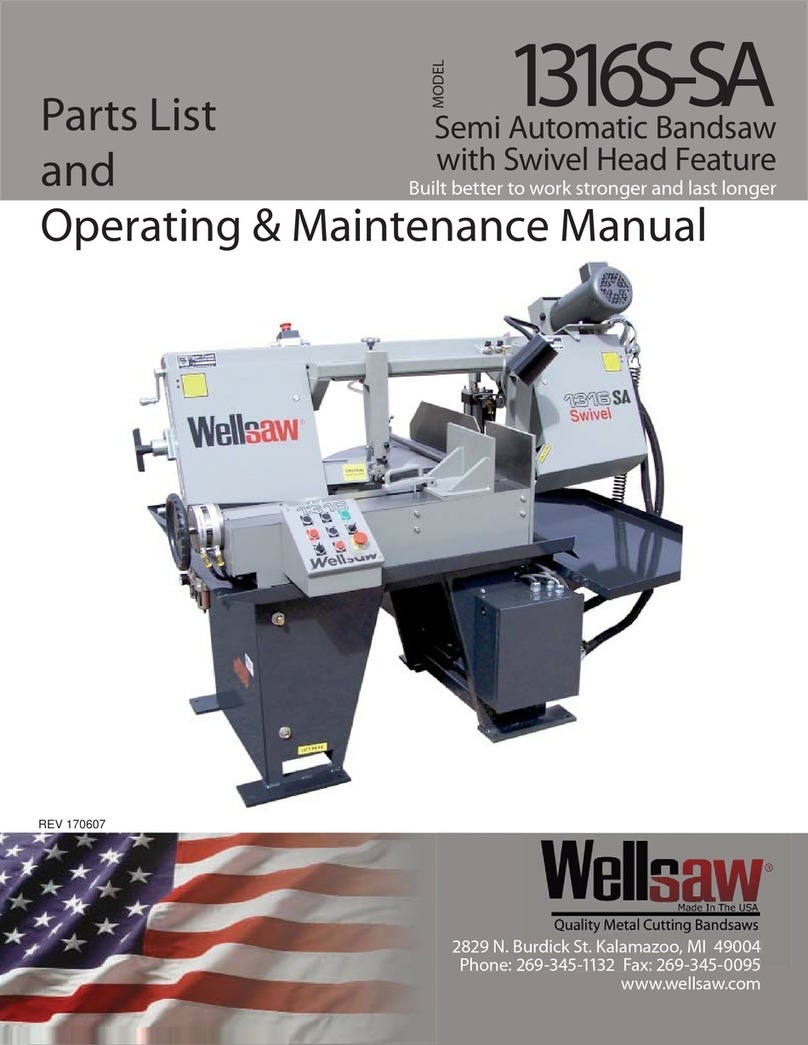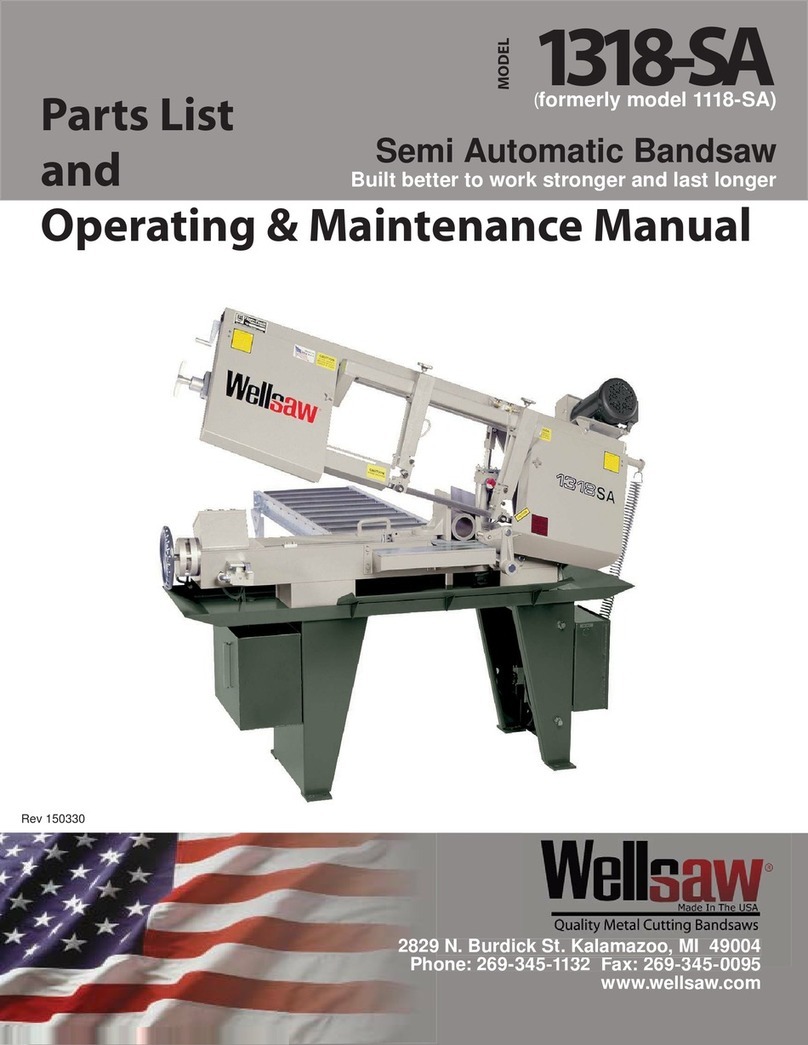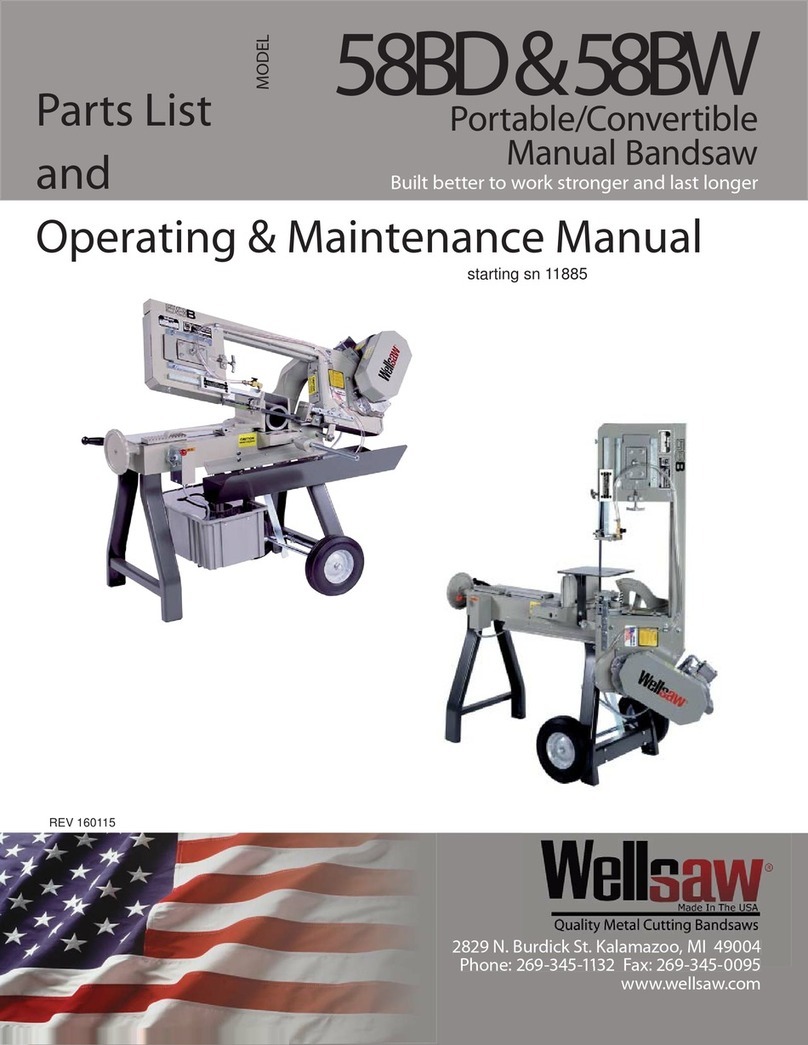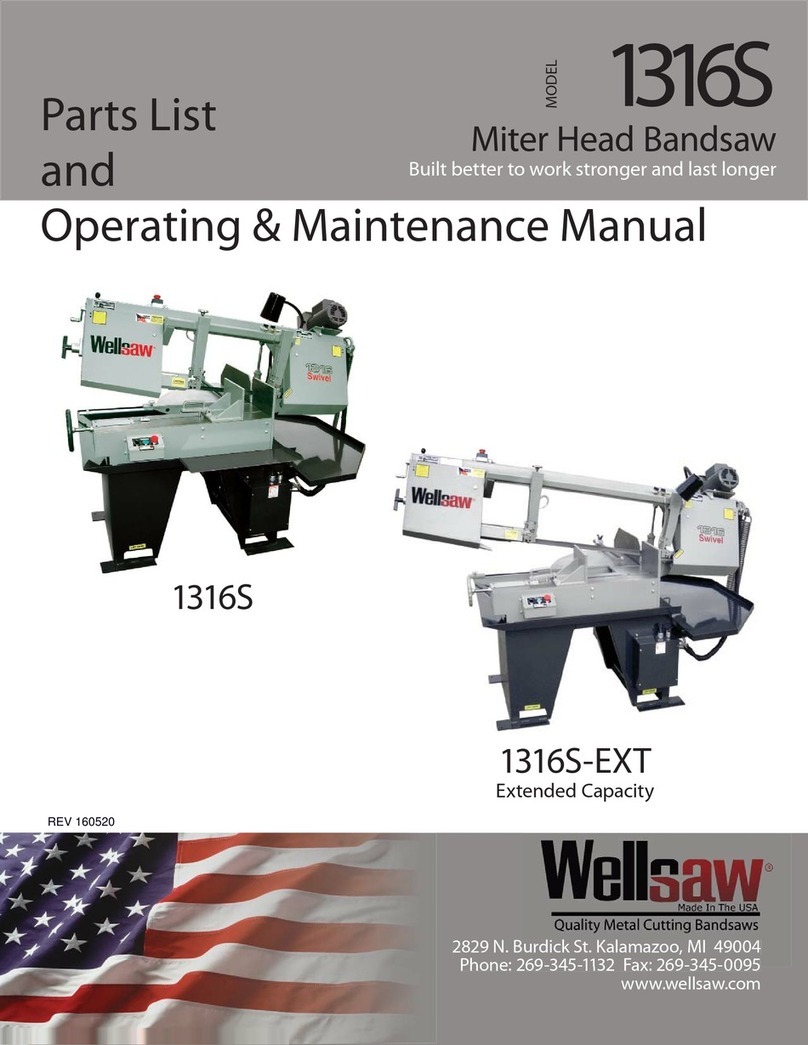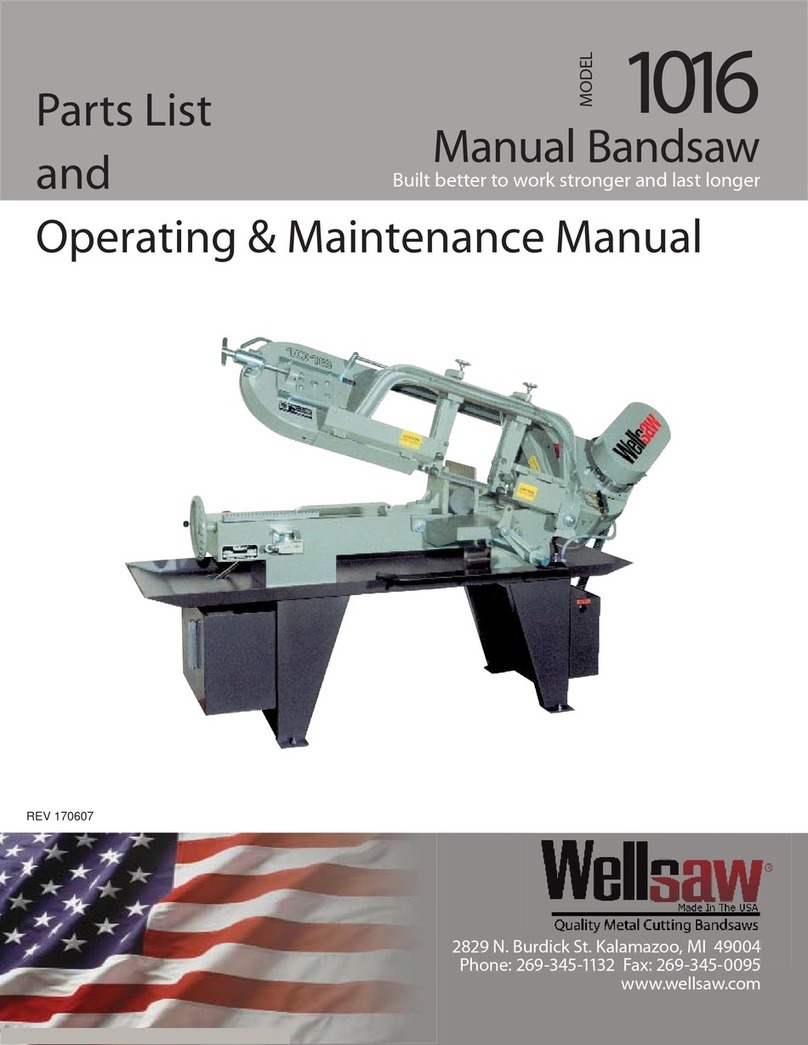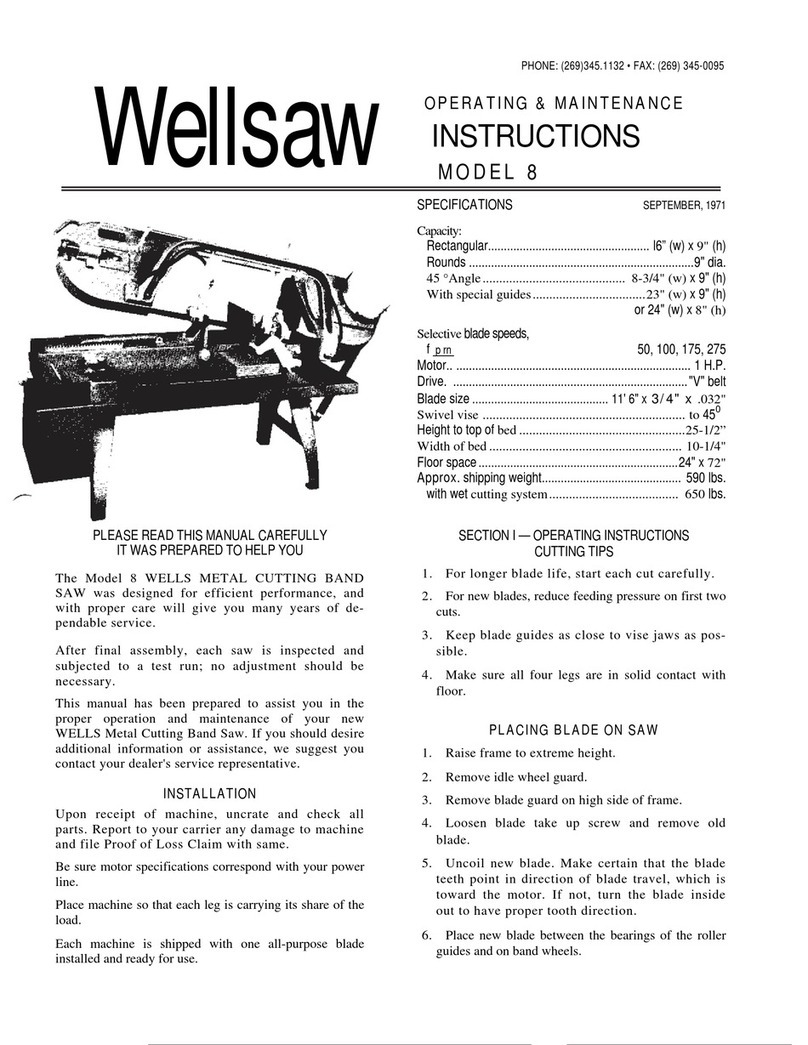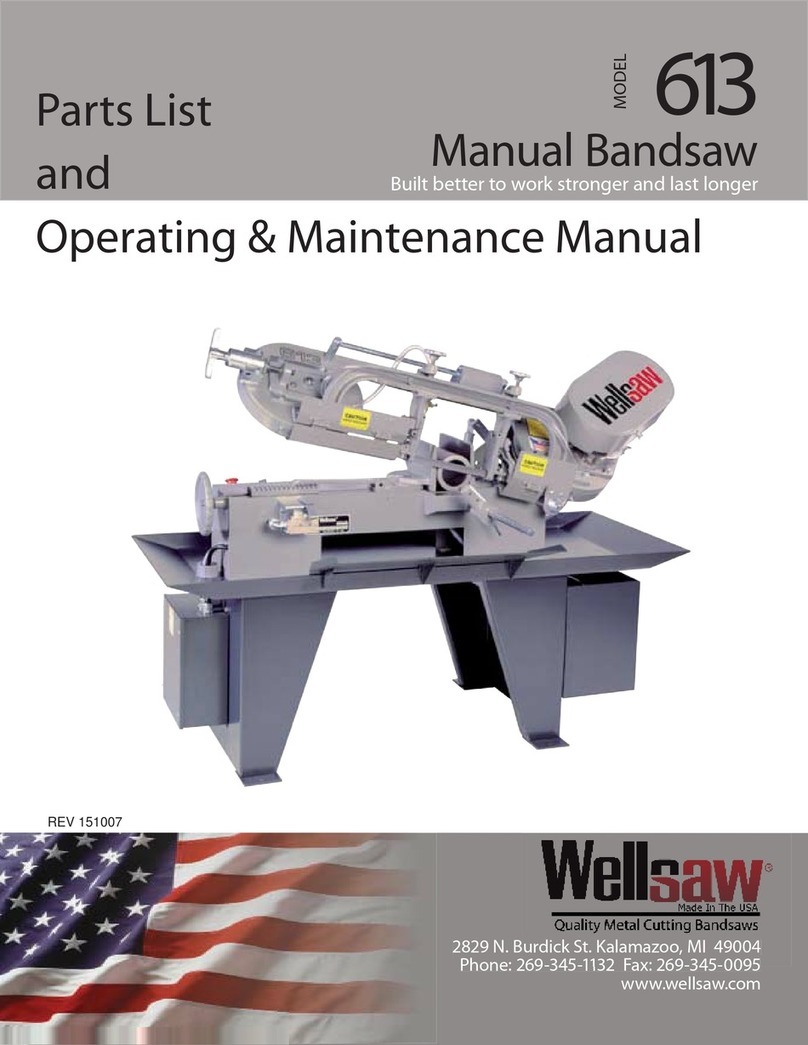
6
OPERATION
READ CAREFULLY
The MODEL V20 METAL CUTTING BAND SAW is designed for
efficient performance. With proper care, it will give you many years
of dependable service. READ THIS MANUAL CAREFULLY BE-
FORE OPERATING YOUR NEW SAW.
After final assembly, each saw is inspected and tested. No adjust-
ment should be needed.
This manual has been prepared to assist you in the operation and
maintenance of your new saw. If you desire additional information
or assistance, please contact your dealer’s service representative.
PLACING BLADE ON SAW
1. Disconnect electrical supply. Wear gloves and safety goggles
throughout the blade changing operation!
2. Open front cover, swing blade guard aside and move tie-bar at
front bottom of table aside.
3. Hold blade carefully while loosening blade tension screw. Re-
move blade.
4. Uncoil new blade. Make certain that blade teeth point in direc-
tion of band travel; downward toward the table.
5. Place new 14’9” blade on band wheels and in saw guides.
The back of the blade should make contact with the back-up
bearing in both upper and lower blade guides and the bearing
on the frame. The frame bearing has a groove in it to help
with proper adjustment. Turn the band wheel by hand to ver-
ify proper band tracking on wheels and through and through
blade guides. (When changing blade sizes, adjust both upper
and lower back-up bearings.)
6. Reposition top and bottom blade guards, and close and latch
covers. Door interlocks prevent saw from being turned on
when doors are open.
7. Start the saw at slow speed to check proper blade installation
before cutting.
SWITCHES
Always press the stop switch to turn off the saw before opening
the cover, making any adjustment, or performing any maintenance.
Restarting is required after the saw automatically stops from power
interruption (undervoltage protection) or overloading.
BLADE GUIDES
When changing blade sizes, adjust the guides to the blade after it
is installed on the band wheels. The side guides should contact
the blade without galling and be recessed behind the toothed por-
tion of the blade. Each side guide is mounted on an eccentric stud
secured by anAllen screw which provides adjustment for sideways
clearance. Back-up guides are set to contact the back of the blade
for blade tracking on the wheels. If necessary, the back-up bearing
contacts the back of the blade. Be sure that both upper and lower
blade guides are adjusted so that the blade travels in a straight line.
(The work table is adjusted to the blade after the blade is installed
and the guides are properly adjusted).
The top blade guide should always be placed as
close to the workpiece as possible to reduce the amount of ex-
posed blade. Keep all guards on the machine and in position when
the saw is in use.
ROTATING BLADE GUIDES
This saw is equipped with blade guides that can be rotated a full
90° to allow cutting very long materials. To rotate these guides:
1. Remove the throat plate from the center of the work table.
2. Loosen the cap screws on both the top and bottom blade guide
mounts.
3. Rotate the Blade GuideAssemblies to guide the blade into the
desired direction. Tighten the cap screws and re-install the
throat plate. It is not normally necessary to loosen the blade
tension when rotating the guide assemblies.
Adjust the Blade Guard as close to the work sur-
face as practical to limit the amount of exposed saw blade.
BLADE BRUSH
Keep the brush positioned so that the brush bristles contact the
toothed portion of the blade.
TABLE
To adjust the angle of the table to the blade, loosen the table pivot
clamp screw under the rear of the table. Pivot the table to the de-
sired angle and tighten the clamp screw.
VARIABLE FREQUENCY MOTOR CONTROLLER
To adjust the bandspeed, burn the small knob on the front of the
saw. Band speeds are indicated on the legend plate behind te
knob. The gearbox has high and low ranges.
WHEEL PITCH
If the blade tends to run off the front of the top (idle) wheel, loosen
the locknuts on the back of the slide block, tighten set screw 1/4
turn and reset the locknuts. Repeat if necessary. The blade does
not have to be loosened to adjust wheel pitch.
To make a similar adjustment on the the lower (drive) wheel, loosen
the lower pair of cap screws on the wheel mounting plate, loosen
the corresponding pair if set screws one turn and tighten the cap
screws.
After making a wheel pitch adjustment, turn the wheel several
times by hand to confirm proper blade tracking. When everything
appears normal, turn the saw on at slow speed to confirm proper
tracking of the blade.
LUBRICATION
Lubricated-for-life components are used through the saw, including
the motor. The blade tensioning screw and slide should be oiled
and greased occasionally for ease of operation.
Blade Tensioning Screw:
1. Inspect monthly.
2. Use Lubriplate grease 130-A or equivalent.
3. Viscosity at 100°F: SUS 750-800.
4. Military Specification: Mil-G-46003
V-20 OPERATION AND MAINTENANCE

